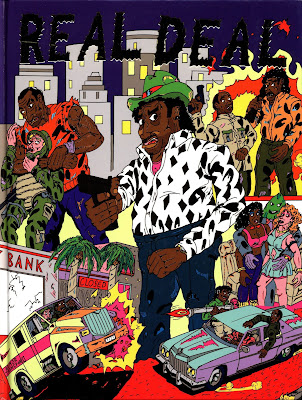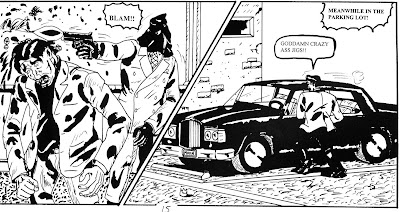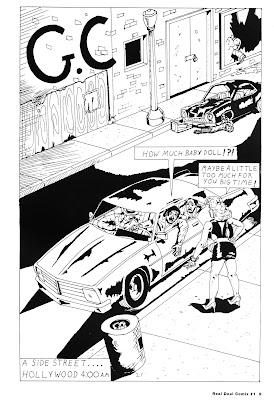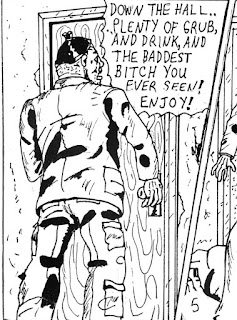by Robert Sheckley
A & W Visual Library
1978
'Futuropolis' was published in November, 1978. It's a 10 x 10 " trade paperback book.
It's another of those rather obscure 'sf-plus-art' books that emerged during the 70s; it bears resemblance to titles like The Immortals of Science Fiction, Spacecraft in Fact and Fiction, and Planet Stories.
Its four chapters loosely are grouped around the concepts of the city as a dystopia; the city in space; the city as a mobile construct; and the utopian city of the future.
The book provides color and black and white illustrations, many drawn from sci-fi art for UK paperbacks of the 70s. There's also a surprising amount of material taken from issues of Metal Hurlant, which at the time was known primarily to U.S. readers as the French magazine from which Heavy Metal had spawned.
These illustrations are accompanied by text from well-known sf author Sheckley. It's fair to say that Sheckley didn't put much effort into this project; his entries have a facetious quality that makes clear he saw this project as a chance to make a little extra income, nothing more.
The chapter about cities in space devotes considerable attention to a topic that was quite trendy in the late 70s and early 80s: Gerald K. O'Neill's The High Frontier and its wishful imaginings of space stations designed to accommodate Earth's surplus population, as well as 'beaming' solar energy to the mother planet in order to solve the Energy Crisis.
Predictably, Sheckley pays homage to James Blish's Cities in Flight sf series.
I usually look to books of this type to provide some insights into 70s sc-fi novels, comics, or even films, that I have not previously noticed. But, with the exception of some excerpts that remind us how well-written and illustrated European sci-fi comics of the postwar era were, 'Futuropolis' never really fulfills its promise to provide a detailed overview of science fiction's treatment of the city.
Too much space is devoted to filling out the page count with tangential material; for example, attention is paid to concepts coming from an obscure, London-based, avant-garde association of architects, called 'Archigram'. During the 60s, Archigram released designs for 'futuristic' constructs such as the 'cushicle':
Other designs from Archigram get coverage, such as a city constructed to be movable in the manner of a giant insect. These 'whimsical' topics really belong more in the pop-art realm rather than the sci-fi realm.
The verdict ? 'Futuropolis' is something of a dud. Unless you're a particularly ardent collector of 70s sci-fi picture books, you are going to want to pass this one by.







































































